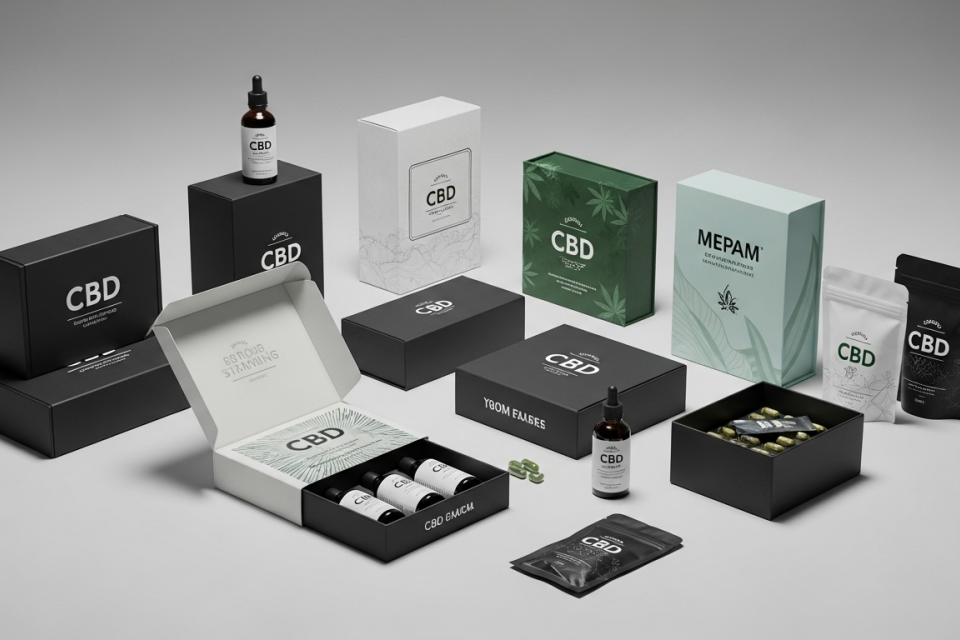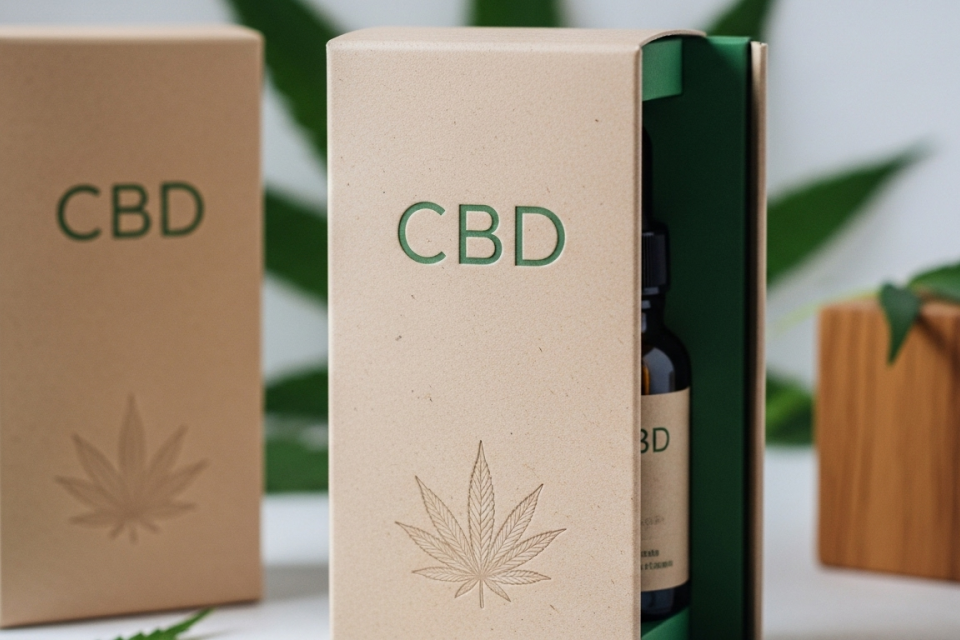Compliance and Labeling for CBD
Navigate the complex world of CBD labeling. Our guide details FDA rules, state laws, and best practices for compliance and building consumer trust.
Summary
Compliance and labeling for cannabidiol (CBD) products in the United States are governed by a complex legal framework that emerged following the 2018 Farm Bill, which legalized hemp-derived products, including CBD, as long as they contain less than 0.3% THC. This legislation significantly shifted the regulatory landscape, removing hemp from the list of controlled substances and paving the way for widespread market access. However, the Food and Drug Administration (FDA) retains authority over the safety and marketing of these products, particularly regarding unverified health claims, creating a notable tension between market expansion and consumer safety concerns.
Navigating compliance is challenging for businesses in the CBD sector due to the patchwork of federal and state regulations. While the FDA has established general guidelines, individual states have varied approaches to CBD regulation, leading to inconsistent labeling and safety standards across the country. This regulatory inconsistency complicates the landscape for manufacturers and retailers, who must ensure their products meet both federal and state requirements to avoid legal penalties and protect consumer trust.
Labeling standards are essential for transparency and consumer safety. Federal regulations require that CBD product labels clearly list ingredients, serving sizes, and manufacturer information, as well as include appropriate warning statements regarding potential health risks. Mislabeling remains a significant issue, with numerous products failing to accurately represent their CBD content or therapeutic benefits, resulting in enforcement actions by regulatory bodies.
As the CBD industry continues to evolve, businesses face ongoing challenges related to compliance, transparency, and consumer trust. The necessity for rigorous quality control and adherence to evolving regulatory frameworks is paramount for maintaining credibility in a market marked by rapid growth and scrutiny. Overall, the compliance and labeling landscape for CBD products embodies a dynamic intersection of legal requirements, consumer safety, and market viability, underscoring the importance of rigorous adherence to standards and practices.
Table of Contents
Legal Framework
The legal framework for cannabidiol (CBD) in the United States is primarily influenced by the 2018 Farm Bill, which legalized the production and sale of hemp-derived products, including CBD, provided that the THC (tetrahydrocannabinol) content does not exceed 0.3% on a dry weight basis. This landmark legislation removed hemp from the list of controlled substances, facilitating broader use of hemp-derived products in consumer markets. However, the bill also placed the responsibility on the Food and Drug Administration (FDA) to establish regulations governing the marketing and safety of CBD products, particularly regarding claims of therapeutic benefits.
Regulatory Oversight
The FDA has taken a cautious approach towards the regulation of CBD, highlighting concerns about the safety and efficacy of many products marketed with unsubstantiated therapeutic claims. While the FDA acknowledges that CBD derived from hemp is no longer considered a controlled substance, it maintains that any food products containing CBD or THC cannot be introduced into interstate commerce unless they are approved through a formal regulation process. To date, no such regulations have been established for CBD in food products, which means that the sale of these items is generally prohibited under federal law.
State-Level Regulations
The legal landscape surrounding CBD is further complicated by varying state laws, creating a patchwork of regulations that businesses must navigate. Some states have enacted comprehensive regulatory frameworks for CBD, addressing labeling, testing, and product safety, while others have minimal regulations in place. For example, states such as Utah, Florida, and Colorado have implemented specific requirements regarding the labeling and testing of CBD products. These discrepancies can lead to challenges for manufacturers and retailers, who must ensure compliance with both federal and state laws to avoid enforcement actions and potential penalties.
Future Developments
As the industry continues to evolve, both federal and state regulations are likely to change. The ongoing review of CBD regulations reflects a dynamic legal environment where businesses must remain vigilant in monitoring compliance requirements and adapting to new laws. The continuous legislative developments indicate that the framework for CBD will keep evolving, influenced by market trends, public health concerns, and the growing body of research surrounding cannabis products.

Compliance Requirements
The compliance landscape for CBD products is complex and varies significantly across jurisdictions. Companies operating in the CBD sector must adhere to both federal and state regulations, which are influenced by guidelines set forth by agencies such as the FDA and FTC. These regulations dictate that product labels must be truthful, not misleading, and supported by scientific evidence. Failure to comply can lead to enforcement actions, penalties, and damage to brand reputation.
Federal Regulations
At the federal level, the Business and Professions Code outlines essential compliance measures for CBD products. For instance, new sections have been established to address the regulatory framework surrounding CBD, with recent updates filed as emergency measures. A Certificate of Compliance is required to be transmitted by specific deadlines, emphasizing the need for businesses to stay informed about regulatory changes to ensure compliance.
Labeling Requirements
CBD product labels must include several critical components to comply with federal regulations. Ingredient List: All ingredients must be listed in descending order by weight, including the quantity of CBD or hemp extract. Mislabeling or omission of ingredients is a common cause of legal actions. Serving Size and Total Amount of CBD: Clear disclosure of serving sizes and the total amount of CBD per serving is required for consumer safety and dosage transparency. Net Quantity Information: Labels must provide accurate weight or volume measurements using both U.S. customary and metric units. Manufacturer Information: The name and address of the manufacturer, packer, or distributor must be displayed for traceability.
Safety Warnings and Transparency
It is crucial for CBD companies to include comprehensive warning statements on their labels. These warnings should highlight potential risks, interactions with medications, and the possibility of failed drug tests, empowering consumers to make informed decisions. Transparency in labeling is vital, as it helps to build trust with consumers and ensures adherence to regulatory requirements.
State Regulations
In addition to federal guidelines, CBD companies must navigate varying state regulations. Some states have implemented comprehensive regulatory schemes that include specific labeling and testing requirements for CBD products. Companies should actively monitor and comply with these state regulations to mitigate the risk of enforcement actions. Notably, in states like Utah, Florida, and Colorado, core labeling and testing requirements have been consistently included within their regulatory frameworks.
Importance of Compliance
Adhering to compliance requirements is not merely about avoiding penalties; it is essential for building consumer trust and establishing credibility within the CBD market. Companies that prioritize compliance can leverage certifications, such as LegitScript’s CBD Certification, which not only demonstrates adherence to regulations but also supports ongoing compliance through active monitoring solutions. As the CBD landscape continues to evolve, maintaining compliance with all regulatory requirements is crucial for long-term success in the industry.

Labeling Standards
Accurate labeling of CBD products is essential for legal compliance and consumer trust. Companies must adhere to various regulations to ensure that their products meet the necessary standards and provide consumers with reliable information about what they are purchasing.
General Labeling Requirements
All CBD product labels must include critical information such as a list of ingredients, net weight or volume, manufacturer or distributor information, and any applicable warnings or precautions. Labels should be clear and legible, prominently displaying required information to ensure consumer safety and transparency.
Product Identity and Quantity
The label must clearly state the product identity, which is prominently displayed on the product display panel (PDP) to attract consumer attention. Additionally, the net quantity statement must appear within the bottom 30% of the PDP and include both metric and U.S. customary measures.
Ingredient List
A detailed ingredient list is vital for informing consumers about the contents of the product. Ingredients must be listed in descending order of predominance by weight, and this includes the type and concentration of CBD along with any other ingredients. This practice builds trust and ensures consumers, especially those with dietary restrictions or allergies, can identify potentially problematic ingredients.
Manufacturer Information
Labels must also contain the name and address of the manufacturer, packer, or distributor, including the street address, city, state, and ZIP code. This information provides consumers with a point of reference for inquiries related to the product.
Warning and Caution Statements
Warning statements about potential side effects, interactions with medications, and other known dangers must be included on the label. It is advisable to feature standard warnings for vulnerable groups, such as children and pregnant women, as well as instructions for proper use and storage.
Compliance with Regulatory Framework
Failure to comply with these labeling requirements can result in enforcement actions, fines, or other penalties for businesses in the CBD industry. Adhering to these standards not only clarifies information for consumers but also ensures that businesses operate within the regulatory framework set forth by relevant authorities.
Additional Considerations
In addition to the general requirements, new labeling regulations for products containing industrial hemp, including batch numbering and scannable QR codes, were established pursuant to AB 45 and must be implemented by designated deadlines. This ensures that consumers have access to detailed product information and can verify the legitimacy of claims made by manufacturers.

Challenges in Compliance and Labeling
The landscape of compliance and labeling for CBD products presents numerous challenges for manufacturers and retailers. These challenges stem from the rapidly evolving regulatory environment, consumer trust issues, and the complexities associated with ensuring accurate product information.
Regulatory Compliance
One of the primary challenges facing CBD companies is the need to stay abreast of fluctuating regulations at both the federal and state levels. The Food and Drug Administration (FDA) has indicated that mislabeling is rampant within the industry, with a significant percentage of tested products exhibiting discrepancies between their actual CBD content and what is claimed on their labels. Companies must ensure their labels meet all legal requirements, including dosage instructions, ingredient disclosures, and necessary warning statements. Failure to comply can lead to severe repercussions such as fines, product recalls, and even the suspension of licenses.
Transparency and Consumer Trust
Transparency in labeling is crucial for building consumer trust, as consumers increasingly seek clear and comprehensive ingredient lists that include potential allergens and additives. However, many manufacturers struggle with providing this information clearly, often resorting to vague or ambiguous language that may mislead consumers. Such practices not only risk regulatory scrutiny but also undermine consumer confidence in the brand.
Common Labeling Mistakes
Manufacturers frequently encounter common pitfalls that can jeopardize compliance and consumer safety. For instance, using difficult-to-read fonts or failing to include all required information can mislead consumers and result in legal issues. Moreover, making unproven health claims on labels can lead to regulatory action and diminish customer trust. It is essential for CBD businesses to avoid these mistakes by adhering strictly to labeling guidelines and ensuring that all claims are substantiated by scientific evidence.
Quality Control Issues
The lack of standardized quality control measures in the CBD industry further complicates labeling compliance. Variability in product quality, including issues related to the levels of cannabinoids such as CBD and THC, has been documented. This inconsistency can lead to mislabeling and consumer dissatisfaction, making it imperative for companies to implement rigorous quality control protocols.

Industry Best Practices
Compliance with Regulatory Requirements
Adhering to regulatory requirements is paramount for businesses in the CBD industry. Companies must stay informed about both federal and state-specific labeling rules to avoid misbranding violations and regulatory penalties. This involves understanding the unique regulations of each state where products are distributed, as requirements can vary significantly. Businesses should monitor updates from regulatory bodies such as the FDA and make necessary adjustments to their labeling practices to ensure ongoing compliance.
Essential Label Components
A compliant label should include several essential components to promote transparency and consumer trust.
Ingredient Lists
Providing a comprehensive ingredient list is crucial for consumer safety and compliance. All ingredients must be clearly listed in descending order by weight, including any CBD or hemp extracts, and should specify additives and potential allergens. Transparency in ingredient disclosure fosters trust and empowers consumers to make informed purchasing decisions.
Serving Size and Dosage Information
Labels must clearly indicate serving sizes and the total amount of CBD per serving. This information is critical for dosage transparency and should be easily accessible, often required on the front or back panel of the product. Ensuring clarity in these areas can help mitigate risks associated with overconsumption and enhance consumer safety.
Name and Contact Information
Including the name and physical address of the manufacturer, packer, or distributor enhances traceability and provides consumers with a means to inquire about the product. This practice builds accountability and fosters a trustworthy relationship with consumers.
Emphasizing Safety and Warning Statements
Incorporating comprehensive warning statements on labels is essential for consumer safety. Businesses should clearly communicate potential risks, interactions with medications, and precautions for safe usage and storage of products. By prioritizing safety, companies not only comply with regulations but also build credibility and trust among consumers.
Clear and Legible Labeling
Labels should be clear, legible, and prominently display all required information to ensure consumer safety and transparency. Using standardized units of measurement for net quantity disclosure is also important, as it reinforces the brand’s commitment to honesty and integrity. Ensuring that labels are visually striking yet informative can help differentiate products in a competitive market while adhering to legal standards.
By implementing these best practices, CBD businesses can navigate the complexities of compliance, build consumer trust, and establish a reputable presence in the market.
